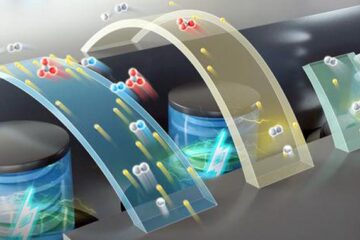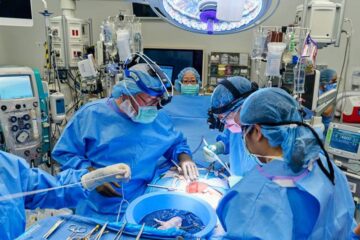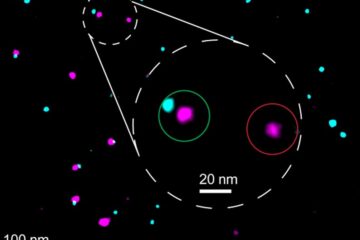Dense hydrogen in a new light

New work from Carnegie scientists using intense infrared radiation shines new light on this fundamental material at extreme pressures and reveals the details of a surprising new form of solid hydrogen.
Under normal conditions hydrogen is a gas consisting of diatomic molecules. The hydrogen molecules start to change as the pressure increases. These different forms are called phases and hydrogen has three known solid ones. It has been speculated that at high pressures hydrogen even transforms to a metal, which means it conducts electricity. It could even become a superconductor or a superfluid that never freezes–a completely new and exotic state of matter.
In a new paper published in Physical Review Letters, a team from Carnegie's Geophysical Laboratory examined the structure, bonding and electronic properties of highly compressed hydrogen using intense infrared radiation.
Using a facility maintained by the Geophysical Laboratory at the National Synchrotron Light Source at Brookhaven National Laboratory, the team found the new form to be stable from about 2.2 million times normal atmospheric pressure and about 80 degrees Fahrenheit to at least 3.4 million times atmospheric pressure and about -100 degrees Fahrenheit.
Their experiments revealed that hydrogen takes a form under these conditions that differs remarkably from its other known structures. The new phase has two very different types of hydrogen molecules in its structure. One type of molecule interacts very weakly with its neighboring molecules–unusual for molecules under this type of very high compression. The other type of molecule bonds with its neighbors, forming surprising planar sheets.
The measurements also show that solid hydrogen under these conditions is on the borderline between a semiconductor, like silicon, and a semimetal, like graphite. The results disprove earlier claims that hydrogen forms a dense atomic metal at these pressures and temperatures.
“This simple element–with only one electron and one proton–continues to surprise us with its richness and complexity when it is subjected to high pressures,” Russell Hemley, Director of the Geophysical Laboratory, said. “The results provide an important testing ground for fundamental theory.”
This research was supported by the NSF. Facilities support was provided by DOE/BES, NSF, and DOE/NNSA.
The Carnegie Institution for Science is a private, nonprofit organization headquartered in Washington, D.C., with six research departments throughout the U.S. Since its founding in 1902, the Carnegie Institution has been a pioneering force in basic scientific research. Carnegie scientists are leaders in plant biology, developmental biology, astronomy, materials science, global ecology, and Earth and planetary science.
Media Contact
More Information:
http://www.carnegiescience.eduAll latest news from the category: Physics and Astronomy
This area deals with the fundamental laws and building blocks of nature and how they interact, the properties and the behavior of matter, and research into space and time and their structures.
innovations-report provides in-depth reports and articles on subjects such as astrophysics, laser technologies, nuclear, quantum, particle and solid-state physics, nanotechnologies, planetary research and findings (Mars, Venus) and developments related to the Hubble Telescope.
Newest articles

High-energy-density aqueous battery based on halogen multi-electron transfer
Traditional non-aqueous lithium-ion batteries have a high energy density, but their safety is compromised due to the flammable organic electrolytes they utilize. Aqueous batteries use water as the solvent for…

First-ever combined heart pump and pig kidney transplant
…gives new hope to patient with terminal illness. Surgeons at NYU Langone Health performed the first-ever combined mechanical heart pump and gene-edited pig kidney transplant surgery in a 54-year-old woman…

Biophysics: Testing how well biomarkers work
LMU researchers have developed a method to determine how reliably target proteins can be labeled using super-resolution fluorescence microscopy. Modern microscopy techniques make it possible to examine the inner workings…





















